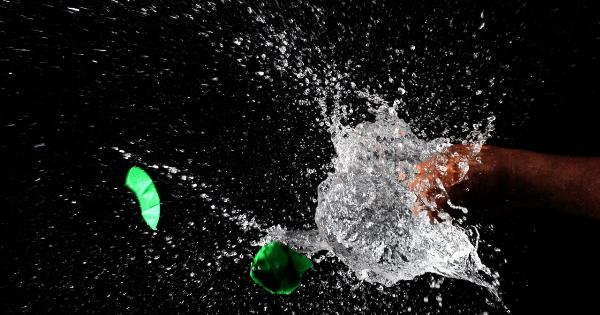When we sneeze, tiny droplets are ejected from our mouths and noses at high speeds.
These droplets can contain viruses, bacteria, and other contagious particles, which is why it’s so important to cover our mouths and noses when sneezing or coughing. However, new research has shown that even covering our mouths may not provide enough protection from the droplets that escape during a sneeze.
What is slow-motion droplet dispersion?
Slow-motion droplet dispersion refers to the process by which droplets are released from the body during a sneeze and how they behave in the air. This process has been studied using specialized cameras that are capable of recording video at high speeds.
By recording sneezes in slow-motion, researchers can better understand how droplets are dispersed and how they can be controlled.
What causes droplet dispersion during a sneeze?
Droplet dispersion during a sneeze is caused by the rapid expulsion of air from the lungs through the mouth and nose. This rapid release of air creates turbulence, which in turn creates droplets in the form of a spray.
The droplets can vary in size, with larger droplets falling to the ground quickly and smaller droplets remaining suspended in the air for longer periods of time.
How far can droplets travel during a sneeze?
The distance that droplets can travel during a sneeze depends on several factors, including the size of the droplets, the velocity of the air expelled during the sneeze, and the surrounding environment.
Larger droplets can travel up to six feet, while smaller droplets can remain suspended in the air for much longer periods of time and travel even further.
Why is slow-motion droplet dispersion important to understand?
Slow-motion droplet dispersion is important to understand because it helps researchers develop better methods for controlling the spread of contagious particles during a sneeze.
By understanding how droplets are dispersed and how far they can travel, researchers can better develop strategies for containing the spread of contagious diseases, such as wearing masks or socially distancing.
What are some ways to reduce droplet dispersion during a sneeze?
There are several ways to reduce droplet dispersion during a sneeze, including:.
- Covering your mouth and nose with a tissue or your elbow when sneezing or coughing
- Wearing a mask to prevent droplets from being released into the air
- Maintaining a safe distance from others to prevent droplets from reaching them
- Washing your hands frequently to prevent the spread of germs
Conclusion
Slow-motion droplet dispersion during a sneeze is a complex process that has important implications for public health.
By understanding how droplets are dispersed and how far they can travel, researchers can better develop strategies for containing the spread of contagious diseases. It’s important for individuals to take steps to reduce droplet dispersion, including covering your mouth and nose when sneezing or coughing, wearing a mask, maintaining social distance, and washing your hands frequently.































